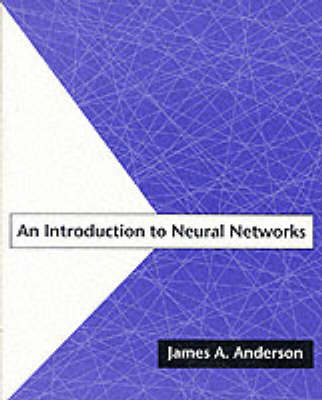
An Introduction to Neural Networks
Seiten
1995
MIT Press (Verlag)
978-0-262-51081-3 (ISBN)
MIT Press (Verlag)
978-0-262-51081-3 (ISBN)
- Keine Verlagsinformationen verfügbar
- Artikel merken
This text is aimed at cognitive science and neuroscience students who need to understand brain function in terms of computational modelling and at engineers who want to go beyond formal algorithms to applications and computing strategies.
An Introduction to Neural Networks falls into a new ecological niche for texts. Based on notes that have been class-tested for more than a decade, it is aimed at cognitive science and neuroscience students who need to understand brain function in terms of computational modeling, and at engineers who want to go beyond formal algorithms to applications and computing strategies. It is the only current text to approach networks from a broad neuroscience and cognitive science perspective, with an emphasis on the biology and psychology behind the assumptions of the models, as well as on what the models might be used for. It describes the mathematical and computational tools needed and provides an account of the author's own ideas.
Students learn how to teach arithmetic to a neural network and get a short course on linear associative memory and adaptive maps. They are introduced to the author's brain-state-in-a-box (BSB) model and are provided with some of the neurobiological background necessary for a firm grasp of the general subject.
The field now known as neural networks has split in recent years into two major groups, mirrored in the texts that are currently available: the engineers who are primarily interested in practical applications of the new adaptive, parallel computing technology, and the cognitive scientists and neuroscientists who are interested in scientific applications. As the gap between these two groups widens, Anderson notes that the academics have tended to drift off into irrelevant, often excessively abstract research while the engineers have lost contact with the source of ideas in the field. Neuroscience, he points out, provides a rich and valuable source of ideas about data representation and setting up the data representation is the major part of neural network programming. Both cognitive science and neuroscience give insights into how this can be done effectively: cognitive science suggests what to compute and neuroscience suggests how to compute it.
An Introduction to Neural Networks falls into a new ecological niche for texts. Based on notes that have been class-tested for more than a decade, it is aimed at cognitive science and neuroscience students who need to understand brain function in terms of computational modeling, and at engineers who want to go beyond formal algorithms to applications and computing strategies. It is the only current text to approach networks from a broad neuroscience and cognitive science perspective, with an emphasis on the biology and psychology behind the assumptions of the models, as well as on what the models might be used for. It describes the mathematical and computational tools needed and provides an account of the author's own ideas.
Students learn how to teach arithmetic to a neural network and get a short course on linear associative memory and adaptive maps. They are introduced to the author's brain-state-in-a-box (BSB) model and are provided with some of the neurobiological background necessary for a firm grasp of the general subject.
The field now known as neural networks has split in recent years into two major groups, mirrored in the texts that are currently available: the engineers who are primarily interested in practical applications of the new adaptive, parallel computing technology, and the cognitive scientists and neuroscientists who are interested in scientific applications. As the gap between these two groups widens, Anderson notes that the academics have tended to drift off into irrelevant, often excessively abstract research while the engineers have lost contact with the source of ideas in the field. Neuroscience, he points out, provides a rich and valuable source of ideas about data representation and setting up the data representation is the major part of neural network programming. Both cognitive science and neuroscience give insights into how this can be done effectively: cognitive science suggests what to compute and neuroscience suggests how to compute it.
James A. Anderson is Professor in the Department of Cognitive and Linguistic Sciences at Brown University.
| Reihe/Serie | An Introduction to Neural Networks |
|---|---|
| Verlagsort | Cambridge, Mass. |
| Sprache | englisch |
| Maße | 203 x 254 mm |
| Gewicht | 1406 g |
| Themenwelt | Geisteswissenschaften ► Psychologie ► Allgemeine Psychologie |
| Geisteswissenschaften ► Psychologie ► Verhaltenstherapie | |
| Informatik ► Theorie / Studium ► Künstliche Intelligenz / Robotik | |
| Naturwissenschaften ► Biologie ► Humanbiologie | |
| Naturwissenschaften ► Biologie ► Zoologie | |
| ISBN-10 | 0-262-51081-2 / 0262510812 |
| ISBN-13 | 978-0-262-51081-3 / 9780262510813 |
| Zustand | Neuware |
| Informationen gemäß Produktsicherheitsverordnung (GPSR) | |
| Haben Sie eine Frage zum Produkt? |
Mehr entdecken
aus dem Bereich
aus dem Bereich
Buch | Softcover (2024)
REDLINE (Verlag)
20,00 €
Eine kurze Geschichte der Informationsnetzwerke von der Steinzeit bis …
Buch | Hardcover (2024)
Penguin (Verlag)
28,00 €


